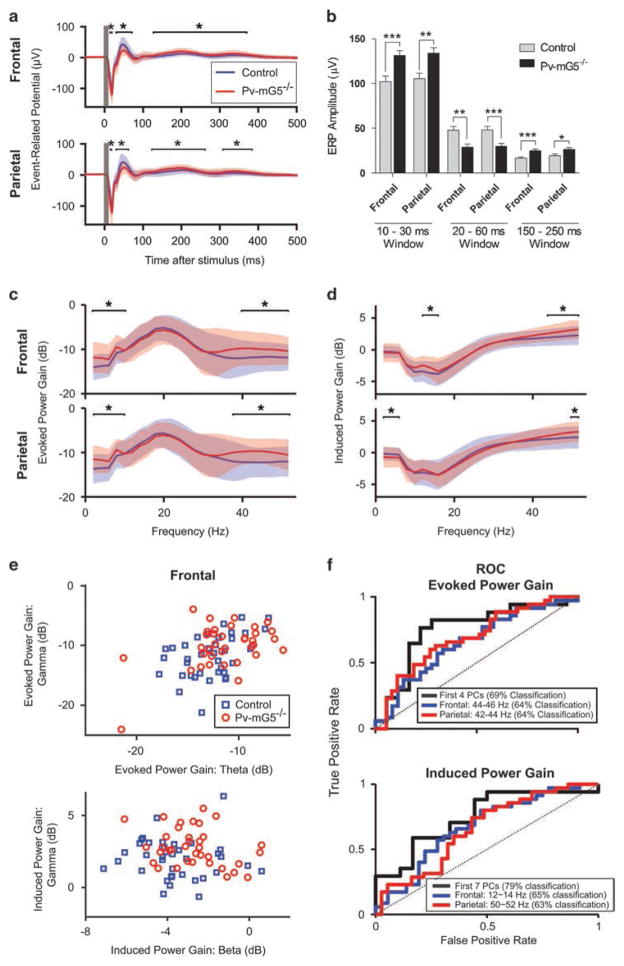Figure 2.
Pv-mG5−/− mice have altered auditory event-related potentials (ERPs) and evoked and induced power. (a and b) Auditory ERPs in Pv-mG5−/− mice had increased amplitude in the 20 ms (genotype: Frontal, F(1,70) = 12.70, P <0.001; Parietal, F(1,68) = 10.53, P <0.01) and 200 ms (genotype: Frontal, F(1,70) = 18.39), P <0.001; Parietal, F(1,68) = 6.57, P <0.05) minima and decreased amplitude in the 40 ms maxima (genotype: Frontal, F(1,70) = 11.77, P <0.01; Parietal, F(1,68) = 12.12, P <0.001). (c–f) Auditory EEG power, measured as a gain relative to the pre-stimulus baseline and analyzed in a 500-ms post-stimulus window, was significantly altered in several key frequencies in Pv-mG5−/− mice. (c) Evoked power gain significantly increased in the low-frequency bands (2–10 Hz) and the gamma band (40–54 Hz). (d) Induced power gain was increased in both channels in the gamma range, whereas it was diminished in the low-frequency bands (2–6 Hz) in the parietal channel and increased in the beta bands (12–16 Hz) in the frontal channel. (e) Evoked and induced power in the theta, beta and gamma bands segregate individual animals by genotype. (f) Receiver operating characteristic (ROC) analysis showed discriminability of control vs Pv-mG5−/− animals using the best frontal or parietal frequency band or using an optimized combination of frequencies (best principal component (PC)). Classification rates indicated performance of a linear discriminant under leave-one-out cross-validation. Asterisk denotes difference between control and Pv-mG5−/− mice (*P<0.05, **P<0.01, ***P<0.001). Significance between genotypes in a–d was determined by the Wilcoxon rank-sum test. Bar graphs depict means ± s.e.m. The data in the traces depict mean ± standard deviation. Control: n =38 (frontal channel) and n =37 (parietal channel); Pv-mG5−/− : n =36 (frontal channel) and n =35 (parietal channel).

